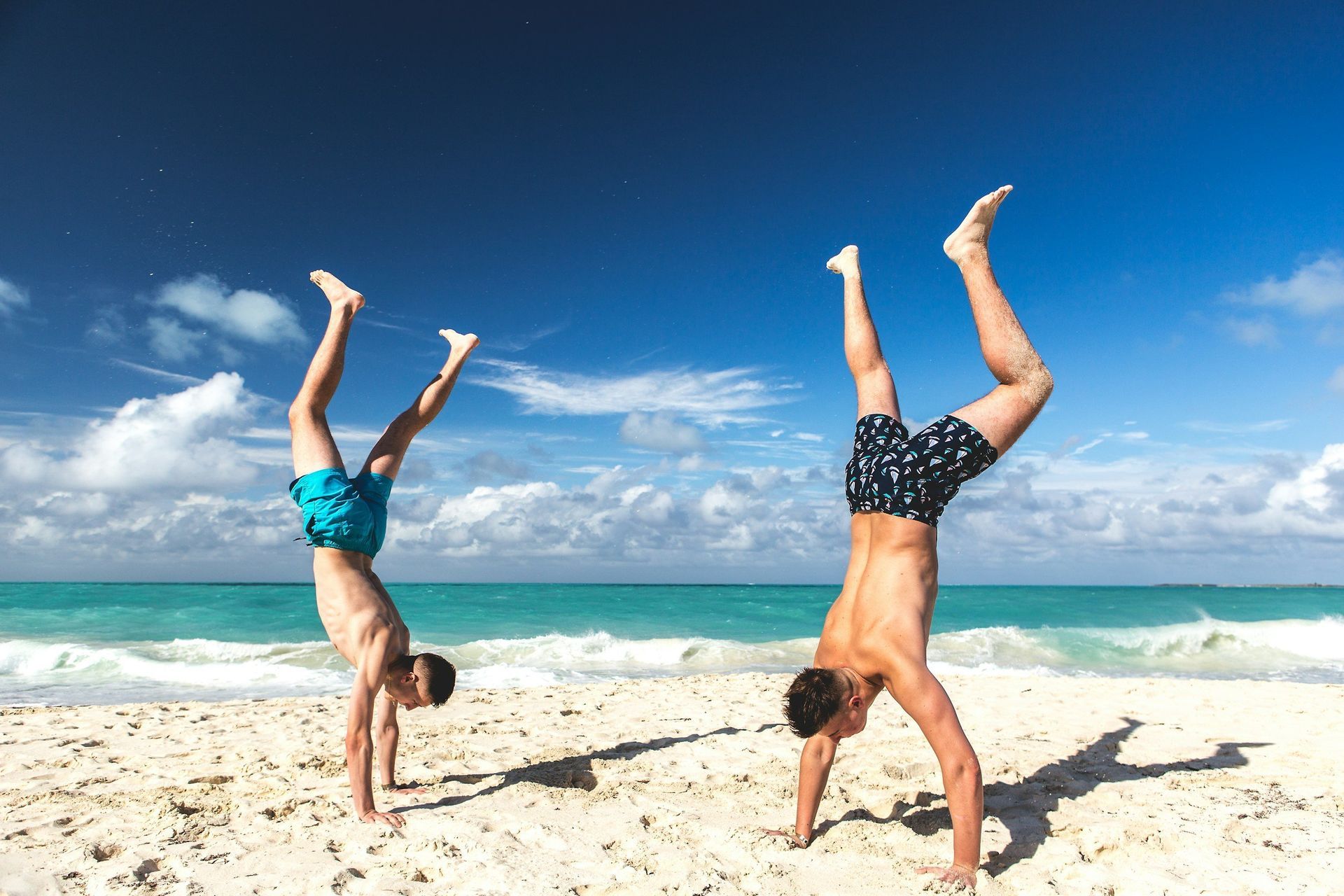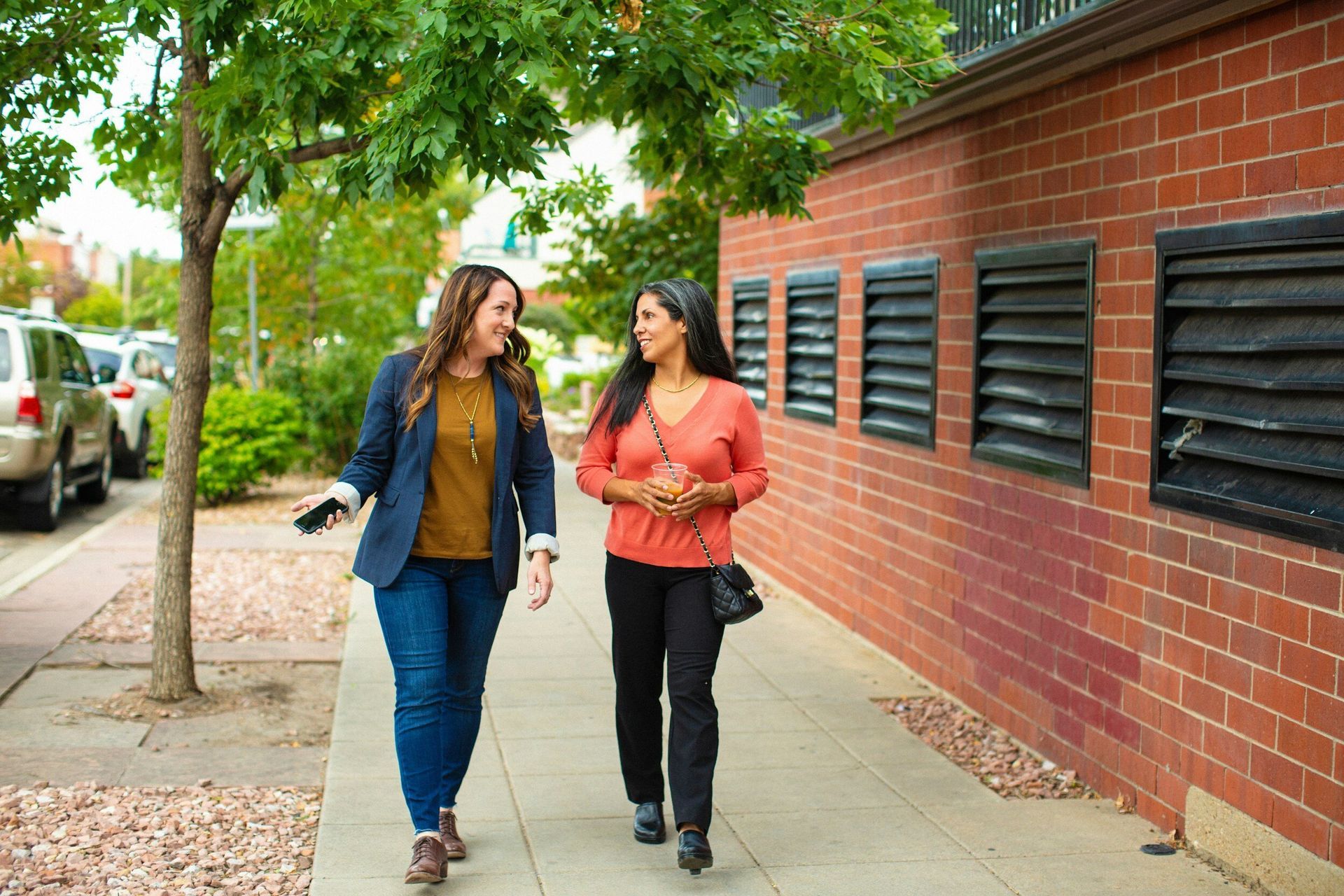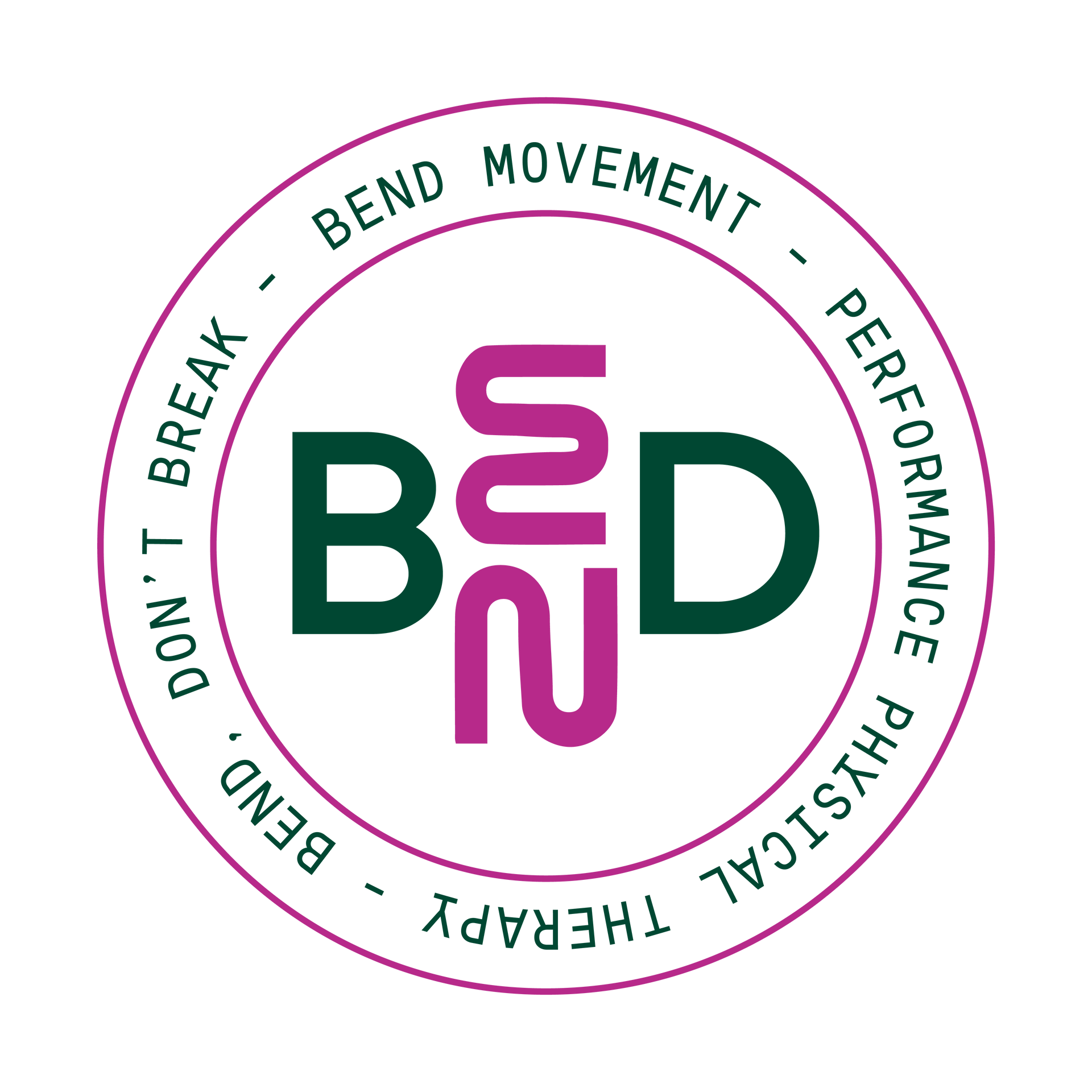Lifestyle Integration and Practical Tips
Catogories

Movement Snacks: Small Bites of Motion for a Healthier Day When people think about staying active, they often imagine long workouts or trips to the gym. At Bend Movement Physical Therapy in Richmond - we love to remind our patients that your body doesn’t need an hour of exercise to feel good. It thrives off of frequent, consistent movement. That’s where “movement snacks” come in - quick bursts of motion sprinkled throughout your day. Movement snacks are simple. Think ankle circles during a Zoom call, squats while your coffee brews, or a walk around the block between tasks. These tiny bits of movement help reduce stiffness, boost circulation, and keep your joints and muscles feeling fresh. I work with a lot of people in Richmond and Henrico who live full, busy lives. Between work, family time, and errands, finding an hour to exercise isn’t always possible. But a few minutes here and there? That’s way more doable. And that’s what makes movement snacks so powerful - they actually fit into your real life. Even just standing up for a few minutes every hour, reaching overhead, or doing a few bodyweight moves can make a big difference. Over time, these small actions help prevent aches and pains while giving you more energy. I often suggest stacking movement onto habits you already have - like calf raises while brushing your teeth, or sitting on the ground and stretching while watching TV. No equipment. No fancy routine. Just small, intentional actions throughout the day. At Bend Movement Physical Therapy, I help people stay active in ways that make sense for their lifestyle. Movement snacks are one of my favorite tools to keep you feeling good, without overcomplicating things.

Small Steps, Big Change: A Guide to Making 2025 Your Year The start of a new year feels like the perfect time for a fresh start. You’re ready to do it all—lift four days a week, run two days, eat 120 grams of protein daily, sleep eight hours every night, journal every morning, and load your plate with veggies. Sounds great, right? Until two weeks in, you’re overwhelmed, exhausted, and back to square one. This happens because trying to change everything all at once is a fast track to burnout. Instead, focus on starting small. Pick one thing you want to work on and stack it onto something you already do. Want to journal every morning? Leave your notebook by your toothbrush. Finish brushing, then write for five minutes. Want to hit the gym twice a week? Pack your gym bag when you’re heading to the grocery store and stop by the gym before you shop. Build habits step by step, and once they stick, add another. Next, focus on adding, not subtracting. Instead of cutting out everything you enjoy, think about what you can add to your life. Want to eat better? Start with one serving of fruits or veggies at each meal, rather than eliminating pizza or chips. Want to be more active? Add a 15-minute walk to your evening routine instead of swearing off Netflix altogether. These small additions create balance and make progress feel sustainable, not restrictive. Here’s the tough-love part: take responsibility. No one else is going to make 2025 better for you. Sure, life throws curveballs, and some things are beyond your control. But many of the choices that got you to where you are now? Those were yours. Own them, learn from them, and make different choices if you want different outcomes. Need help figuring it out? Don’t be afraid to hire a coach or lean on someone who can guide you. Change isn’t easy, but it is possible when you focus on small, consistent steps. Give yourself grace, be patient, and remember: it’s not about doing everything perfectly—it’s about doing the next right thing. This time next year, you’ll be amazed at how far you’ve come.

Outside Activity with Shorter Days As the days get shorter, it is harder to find time for outdoor activity, but staying active outside is still possible with a bit of creativity and planning. Whether you enjoy walking, running, or simply being in nature, you can make the most of the daylight hours and adjust your routine to fit into your schedule. One of the best strategies is to shift your activities to earlier in the day when daylight is more plentiful. When possible, take advantage of a morning walk or run, or use your lunch break to sneak in some steps. Even a short 15-minute walk can make a big difference, helping you get fresh air and natural light, which are beneficial for both your physical and mental health. As daylight fades, safety becomes a priority. If you’re exercising in the early morning or late afternoon, make sure you’re visible to others by wearing reflective gear or using lights. There are plenty of options that help keep you safe when walking, running, or biking in low-light conditions. Staying on well-lit paths or familiar routes can also help you stay safe while you enjoy the outdoors. Fall and winter months bring cooler temperatures, which can be both refreshing and invigorating. Layer up and embrace the crisp air. Walking, running, or hiking in cooler weather can even improve your performance by preventing overheating. Plus, outdoor activities in cooler months provide the added bonus of enjoying peaceful, quiet trails or parks with fewer crowds. Even with less daylight, you can find ways to stay active outside. By adjusting your routine, prioritizing safety, and enjoying the benefits of cooler weather, you can keep moving and maintain your health all year round.

Mobility and Strength on the Go: Traveling with Minimal Equipment Traveling doesn’t have to mean losing your mobility and strength routines. With a few key movements and minimal equipment, you can maintain your movement habits no matter where you go. By focusing on bodyweight movements, you can create an effective workout plan that keeps you moving, strong, and flexible while on the road. Long hours sitting can lead to stiffness in the body. Prioritizing mobility exercises while traveling will counteract these effects and keep your joints healthy. Simple movements like neck circles, spinal twists, and shoulder rolls can be done in small spaces and don’t require any equipment. Additionally, stretches such as forward bends, lunges, and side bends help maintain flexibility, making it easier to stay active while you’re on the go. Strength training while traveling is easy with a few fundamental bodyweight exercises. Squats, lunges, push-ups, and planks can easily be adapted to fit your fitness level. These compound movements engage multiple muscle groups, and provide an efficient full-body workout. For added intensity, try single-leg variations like split squats or Bulgarian lunges. Travel can be unpredictable, but quick workouts can fit into even the busiest itinerary. Consider incorporating full-body circuits into your routine that combine strength and mobility exercises. For example, alternate between squats, lunges, and planks for strength, and hip stretches or thoracic rotations for mobility. These circuits can take as little as 15-20 minutes and help you keep things moving. Mobility and strength exercises don’t require a gym or heavy equipment to be effective. With simple stretches and bodyweight movements, you can maintain your movement health while traveling and stay ready for anything.

Maintaining Movement Health on the Go: Tips for Consistency During Travel Apr 11 Traveling can disrupt our usual fitness routines and make it challenging to stay consistent with our movement goals. However, with a bit of creativity and planning, it's possible to prioritize movement health and maintain a consistent program even while on the go. In this blog post, we'll dive into some easy-to-implement ideas for staying active during travel, including mobility exercises, bodyweight workouts, and simple strategies for incorporating movement into your itinerary. Mobility on the Move: Stretching: Allocate a few minutes each day for stretching to alleviate stiffness and maintain mobility. This can be done either at the start or end of your day. Focus on key areas like the hips, shoulders, and back to counteract the effects of prolonged sitting during travel. Mini Mobility Circuits: Incorporate short mobility circuits into your daily routine, including movements like leg swings, arm circles, and spinal twists. These dynamic exercises can be done anywhere and help improve flexibility and range of motion. Bodyweight Workouts: Hotel Room Workouts: Make use of the space wherever you are staying to perform bodyweight exercises such as squats, lunges, push-ups, and planks. Aim for a quick but effective workout to get your heart pumping and muscles engaged. Even a 5-10 minute circuit can give you benefits! Outdoor Fitness: Take advantage of outdoor spaces like parks or beaches to incorporate bodyweight exercises into your surroundings. Try walking lunges, step-ups on benches, or using playground equipment for pull-ups and dips. Simple Strategies for Movement Integration: Active Sightseeing: Explore your destination on foot or by bike to incorporate movement into your sightseeing adventures. Opt for walking tours, hike scenic trails, or rent bikes to explore the city while staying active. Staircase Workouts: Use staircases in your hotel or public spaces for a quick cardio boost. Try stair sprints, step-ups, or walking lunges to elevate your heart rate and strengthen your lower body. Movement Breaks: Incorporate short movement breaks throughout the day, especially during long flights or road trips. Stand up, stretch, and take a brief walk to combat being in one position too long and to maintain energy levels. Prioritize Consistency and Adaptability: Set Realistic Goals: Establish achievable movement goals for your travel period, considering factors like time constraints, available resources, and personal fitness levels. Focus on consistency rather than intensity to maintain progress. Be Flexible: Embrace flexibility in your movement routine and adapt to the resources and opportunities available during travel. Modify exercises, adjust workout durations, and explore alternative activities to keep moving consistently. By incorporating simple movement strategies into your travel routine, you can prioritize your movement health and stay consistent with your fitness goals even while exploring new destinations. Enjoy both your vacation and the journey of maintaining your movement practice on the go. Want help putting together a travel movement program to best meet your movement goals? Work with a professional at Bend Movement Physical Therapy, a performance practice located in Richmond/Henrico Virginia! Schedule a visit today where you can directly address injuries or pain and prevent future setbacks.

5-15 Minute Daily Movement Routine: Enhance Mobility and Transform Your Health In today's fast-paced world, it can be hard to find the time to engage in physical activity and exercise. However, dedicating just 5-15 minutes each day to focused movement practices can make a remarkable difference in your overall mobility and health. In this blog post, we'll explore a collection of effective daily exercises that you can easily integrate into your routine for lasting benefits. Morning Mobility Wake-Up: (5 minutes) Start your day with a gentle mobility routine to wake up your body and prepare it for the day ahead. Begin with dynamic stretches like arm circles, hip rotations, and neck tilts. Follow up with a few minutes of controlled deep breathing to oxygenate your muscles and promote relaxation. Desk Break Stretches: (5 minutes) If you have a sedentary job, take a 5-minute break every couple of hours to stretch and move. Incorporate simple desk stretches like wrist flexors and extensors, seated forward folds, trunk rotations, and neck stretches. These stretches can help prevent stiffness and improve circulation. Lunchtime Walk: (10-15 minutes) Utilize your lunch break for a brisk walk outdoors. A 10-15 minute walk can boost your mood, increase blood flow, and provide a mental reset. It can also help improve the metabolism of your lunch as well as provide you with a chance to soak up the sun to optimize your levels of Vitamin D. Evening Release and Relaxation : (10 minutes) Before bed, dedicate 10 minutes to unwind and release tension. Incorporate foam rolling or self-myofascial release techniques for tight areas like your calves, quads, and upper back. Pair this with gentle static stretches for your hamstrings, hip flexors, and chest. This can also pair nicely with watching TV - just find a place on the floor and add some movement to the mix! Core and Posture Builder: (5 minutes) Include a quick core routine to strengthen your core muscles and improve your posture. Perform exercises like planks, bird-dogs, and glute bridges. Improving the control of your spine can assist in overall performance with daily activities as well as sports. A strong core can promote improvements in power output, alleviate lower back pain, and enhance overall stability. Deep Breathing and Mindfulness: (5 minutes) Set aside 5 minutes for deep breathing and mindfulness. Find a quiet space, sit comfortably, and focus on your breath. One specific form of breathing, called a physiological sigh, has been shown to significantly decrease stress and anxiety. Inhale deeply through your nose, once fully inhaled, take one more inhalation to totally fill your lungs, and then slowly exhale slowly through your mouth, as if you are breathing out through a straw. This practice can reduce stress and increase mental clarity. Flexibility Enhancer: (5 minutes) Improve your flexibility with a quick stretching routine. You can perform ballistic movements where you incorporate large movements that target major muscle groups such as your hamstrings, quadriceps, hip flexors, and shoulders. Gently move in and out of your stretches. Before-Bed Mobility Flow: (10 minutes) End your day with a gentle mobility flow to ease tension and improve sleep quality. Incorporate movements like cat-cow stretches, spinal twists, and gentle lunges. Focus on connecting your breath with each movement, pairing each inhalation with lengthening, and each exhalation with relaxing deeper into your movement. Incorporating these small daily movement snacks into your routine doesn't require a major time commitment, but the benefits are substantial. By finding time to focus on mobility, flexibility, and mindfulness, you will find that you are nurturing your body and mind in meaningful ways. Whether you're looking to alleviate discomfort, improve your mobility, or simply boost your energy levels, these practices can contribute to your overall well-being. Remember, consistency is key – making these practices a habit in your daily routine can lead to lasting improvements in your mobility and health. Do you want help figuring out the best way to improve your daily movement practice? At Bend Movement, our physical therapy and wellness team focus on delivering individualized care to decrease aches and pains and improve the way you move and feel. Get in contact with us, and allow us to help you find your best self!

